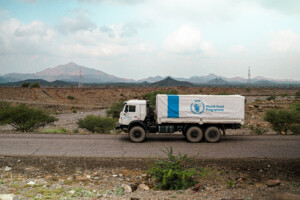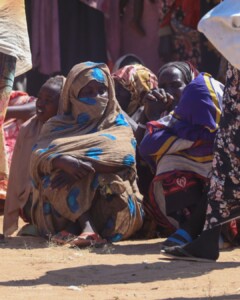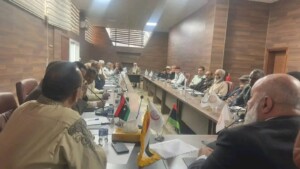Sudan OCHA bulletin 46: Expected influx of South Sudanese refugees
The latest humanitarian aid bulletin by the UN’s Office for the Coordination of Humanitarian Affairs (OCHA) reports that the first inter-agency mission to Fanga Suk, East Jebel Marra, since 2011 has identified 18,000 people in need of aid. The latest dengue update of the Sudanese Ministry of Health states that since the end of August, 392 suspected severe cases – including 113 fatalities – have been reported in Darfur. Intensified fighting in border states in South Sudan is expected to lead to a new influx of refugees into Sudan. In West Darfur, communities struggle to manage water facilities in Sirba locality. In Blue Nile state, 13,700 children affected by conflict in Bau and Geissan localities benefit from child protection services.
The latest humanitarian aid bulletin by the UN's Office for the Coordination of Humanitarian Affairs (OCHA) reports that the first inter-agency mission to Fanga Suk, East Jebel Marra, since 2011 has identified 18,000 people in need of aid. The latest dengue update of the Sudanese Ministry of Health states that since the end of August, 392 suspected severe cases – including 113 fatalities – have been reported in Darfur. Intensified fighting in border states in South Sudan is expected to lead to a new influx of refugees into Sudan. In West Darfur, communities struggle to manage water facilities in Sirba locality. In Blue Nile state, 13,700 children affected by conflict in Bau and Geissan localities benefit from child protection services.
18,000 need aid in Jebel Marra’s Fanga Suk
For the first time since 2011 and after months of planning, an inter-agency mission visited Fanga Suk in Central Darfur’s Northern Jebel Marra locality. The mission on 11 November found that 7,875 displaced people and 10,000 people from the host community are in need of food, emergency shelter and household supplies, as well as water, health, education and protection services. Most of the displaced people are living in shelters made of local materials—which offer poor protection from the elements—or are living with the host community.
In addition, the locality commissioner reported that 5,000 people in Aday village (1km north of Fanga Suk), 5,000 people in Auira village (1km west of Fanga Suk) and an unknown number of people in some 56 surrounding villages, also have humanitarian needs. All these people have all been affected by conflict in the state.
The area is suffering from lack of basic services and infrastructure and the main humanitarian needs of the 7,875 displaced people are food and emergency shelter and household supplies, which will be distributed to them soon, writes OCHA.
Dengue update
According to the Ministry of Health, 392 suspected cases of severe dengue fever—including 113 fatalities—were reported in all Darfur states between 29 August and 14 November. This sudden increase of 148 cases and three fatalities between 8-14 November, is mainly due to the re-classification of cases by the epidemiologists of some cases in West Darfur’s Kereinik hospital.
According to the Ministry, 53 percent of all reported cases are male and the age group 5 to 14 years has the highest number of cases (49 percent). The majority of reported cases are in West Darfur followed by Central Darfur, North Darfur East Darfur and finally South Darfur. The outbreak has now affected 21 localities in Darfur.
Child protection in Blue Nile
An estimated 13,700 children affected by conflict in Bau and Geissan localities are benefiting from child protection services. The project started in July 2015 and has already established four protection networks, which address not only the protection needs of the 13,700 displaced children but also their mothers and other vulnerable people.
Struggle over water in Sirba, West Darfur
Following reports to the Darfur hotline of problems in water livelihood assistance in Sirba and Abu Suruj villages in West Darfur’s Sirba locality, a mission visited the area on 11 November. Problems in water services were caused by the communities struggling to manage water facilities due to challenges such as resistance of community members to pay tariffs needed to finance the operation, lack of access to spare parts, and inadequate training of water committees.
Intensified fighting in South Sudan
Intensified fighting and a worsening food situation in South Sudan’s Unity and Upper Nile states will likely lead to a further influx of new arrivals in the coming weeks, according to the UN Refugee Agency (UNHCR). UNHCR also reports that as of 11 November 198,448 South Sudanese refugees have arrived in Sudan since fighting broke out in South Sudan in mid-December 2013. From 29 October to 11 November, ongoing fighting in the border areas of South Sudan led to an influx of 1,340 families (about 4,000 people) to El Kuek reception centre in White Nile State. However, most of these families returned to South Sudan after fighting stopped.











 and then
and then